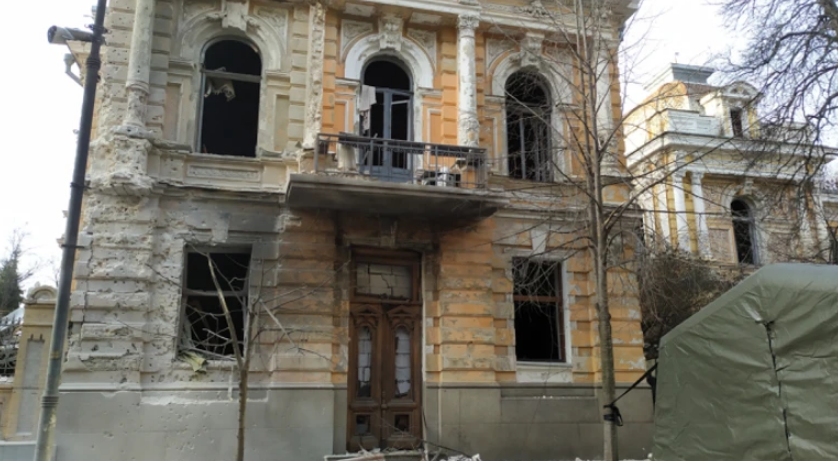In Kyiv, a historical building was damaged by a “shaheed” attack

As a result of the Russian attack on January 1 in Kyiv, the building of the National Union of Writers of Ukraine was damaged.
“As a result of the attack by racist shaheeds on the morning of January 1, the House of Writers of Ukraine was damaged: almost all windows were broken, the facade was partially damaged, as well as some offices inside the building. Fortunately, there were no injuries,” the press service of the National Union of Writers of Ukraine reported.
Earlier, members and employees of the union reported on social networks that the building of the Lieberman estate from 1879, which housed the National Union of Writers of Ukraine, was damaged.
“Today’s New Year greetings from the Russians are particularly cruel. The House of Writers of Ukraine was left without a single window after the morning Russian attack on Kyiv. And there are 83 of them. Doors, walls, ceilings are destroyed. A historic building, an architectural monument, our writers’ house has become a ruin,” wrote writer and union member Tetyana Folvarochna.
Folvarochna also called on everyone to come to the House of Writers on January 2, from 11:00, to help clear the rubble.
“The enemy has targeted the Union. … It is a whole world. Childhood, youth, mature years. These are still alive Mushketyk, Gonchar, Zagrebelny, Dimarov, Yavorivsky, Drach, Lubkivsky. As a child, I was most looking forward to the children’s holiday at the Union. There, cartoons were shown in the assembly hall and sweets were given out. Such magic,” wrote poet and member of the National Union of Writers of Ukraine Vasyl Zima.
Since 1953, the National Union of Writers of Ukraine has been located in an ancient monument of history, art and architecture – the Lieberman estate.
It was built in 1879 by architect Volodymyr Nikolayev, the first owner was Adjutant General Fedor Trepov. In the mid-1890s, the estate became the property of the Kiev merchant and sugar manufacturer Simkha Lieberman, so Nikolayev rebuilt it for his needs in 1896.
The interiors of the premises of the Lieberman estate had a rich decor: stucco ceilings, cornices, carved doors, artistic tiled stoves, marble window sills, brass window and door fittings, inlaid parquet. The decoration of the house combined features of different styles – Renaissance, Baroque, Classicism, Moorish art.
